Flavors of the Vine
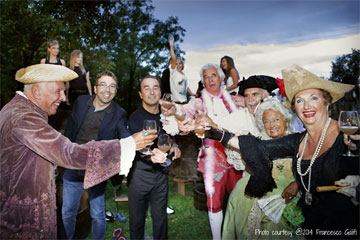
Photo courtesy of Francesco Galifi

Vin, Wein, Vino, вино and ワイン — No matter what you call it, it’s grape harvest north of equator. With that said, Trivia 61 will be devoted to the Flavors of the Vine.
No one will see your answers except for you.

You scored %%SCORE%% out of %%TOTAL%%. Your performance has been rated as %%RATING%%
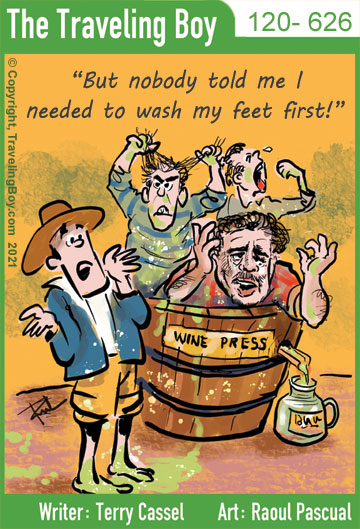 We hope you had fun!
We hope you had fun! Question 1 |
True or False?
Terroir (French from terre, "land") is a term used to describe the environmental factors of the grape.
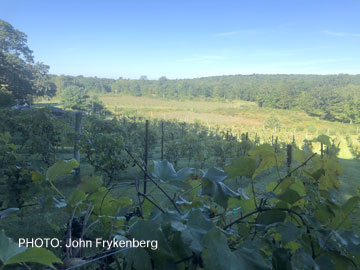
A | True |
B | False |
The answer is: True
In the context of wine production, terroir is a concept that encompasses the varieties of grapes used, elevation and shape of the vineyard, type and chemistry of soil, climate and seasonal conditions, and the local yeast cultures.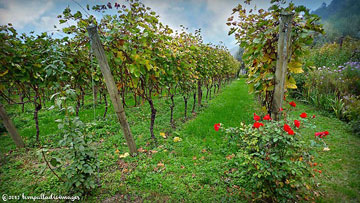
The range of possible combinations of these factors can result in great differences among wines, influencing the fermentation, finishing, and aging processes as well. Many wineries use growing and production methods that preserve or accentuate the aroma and taste influences of their unique terroir. However, flavor differences are less desirable for producers of mass-market table wine or other cheaper wines, where consistency takes precedence. Such producers try to minimize differences in sources of grapes through production techniques such as micro-oxygenation, tannin filtration, cross-flow filtration, thin-film evaporation, and spinning cones.
Question 2 |
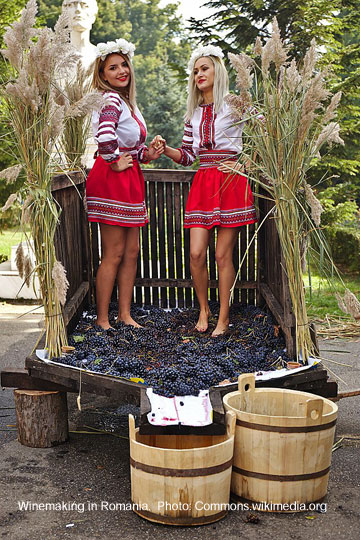
A | China |
B | France |
C | Germany |
D | Italy |
E | Switzerland |
Answer: D. Italy
Top Ten Wine-Producing Nations in 2020:
- Italy
- France
- Spain
- United States
- Argentina
- Australia
- South Africa
- Chile
- Germany
- China
Source: 2020 Wine Production
Question 3 |
True or False?
The sweetness of wine is determined by the amount of residual sugar in the wine after fermentation, relative to the acidity.
A | True |
B | False |
Answer: True
Wines contain many chemical compounds similar or identical to those in fruits, vegetables, and spices. The sweetness of wine is determined by the amount of residual sugar in the wine after fermentation, relative to the acidity present in the wine. Dry wine, for example, has only a small amount of residual sugar. Some wine labels suggest opening the bottle and letting the wine "breathe" for a couple of hours before serving, while others recommend drinking it immediately. Decanting (the act of pouring a wine into a special container just for breathing) is a controversial subject among wine enthusiasts. In addition to aeration, decanting with a filter allows the removal of bitter sediments that may have formed in the wine. Sediment is more common in older bottles, but aeration may benefit younger winesQuestion 4 |
True or False?
Viking expeditions of Vinland recorded the first grape vines found in the New World.
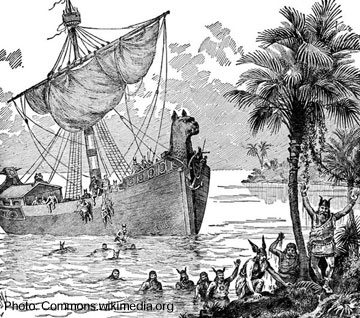
A | True |
B | False |
Answer: True
Viking expeditions of Vinland recorded the first grape vines found in the New World. Vinland, Vineland or Winland (Old Norse: Vínland) was an area of coastal North America explored by Leif Erikson around 1000 CE, nearly five centuries before the voyages of Christopher Columbus and John Cabot. The name appears in the Vinland Sagas, and presumably describes both Newfoundland and the Gulf of Saint Lawrence as far as northeastern New Brunswick (where the eponymous grapevines are found). Much of the geographical content of the sagas corresponds to present-day knowledge of transatlantic travel and North America.In 1960, archaeological evidence of the only known Norse site in North America (outside Greenland) was found at L'Anse aux Meadows on the northern tip of the island of Newfoundland. Before the discovery of archaeological evidence, Vinland was known only from the sagas and medieval historiography. The 1960 discovery further proved the pre-Columbian Norse exploration of mainland North America. L'Anse aux Meadows has been hypothesized to be the camp Straumfjörð mentioned in the Saga of Erik the Red, who was banished from his Norse homeland (in what is today's Norway) to Iceland, and then banished from Iceland to Greenland; which really was green at the time of his arrival.
Question 5 |
True or False?
Wine is a fundamental component of Mormon laws and traditions.
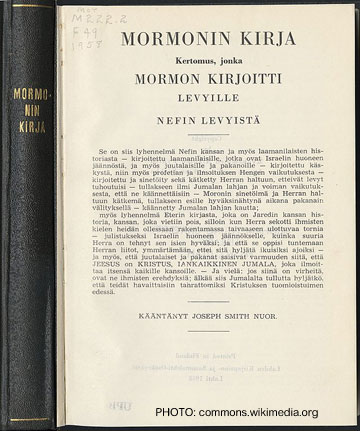
A | True |
B | False |
Answer: False
Wine is an integral part of Jewish laws and traditions. The Kiddush, is a blessing recited over wine or grape juice to sanctify the Shabbat. On Pesach (Passover) during the Seder, is a Rabbinic obligation of adults to drink four cups of wine. In the Tabernacle and in the Temple in Jerusalem, the libation of wine was part of the sacrificial service. Note that this does not mean that wine is a symbol of blood, a common misconception that contributes to the Christian beliefs of the blood libel. It has been one of history's cruel ironies that the blood libel — accusations against Jews using the blood of murdered gentile children for the making of wine and matzot — became the false pretext for numerous pogroms. And due to the danger, those who live in a place where blood libels occur are halachically exempted from using red wine, lest it be seized as "evidence" against them.EXTRAS:
The World’s Most Expensive Wine Ever Sold A 1787 Chateau Lafitte was auctioned at Christie's London auction house, in December 1985 for $156,450* [source: Feiring] and is widely recognized as the most expensive bottle of wine ever sold. Reportedly, many prospective buyers believed that the initials of Thomas Jefferson were etched in the glass bottle. At one time, it was a common practice to engrave initials on bottles when purchasers placed large orders from the Chateau, so this bottle could have been a part of the president's estate, which would be at least one reason behind the hefty price tag.*Purchasing power of $100 in 1985 equals $247.61 today. That works out to about $65,967.27 per 4-ounce glass, give our take a $5,000 drop or so.
The Five S's of Wine Tasting
Wine tasting doesn't have to be intimidating. You’ll find by using the five S's () --- see, swirl, sniff, sip and savor) --- is a humorous way to taste wine responsibly. Easy to remember but not always easy to do especially the last word.
